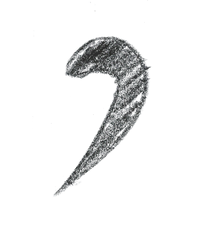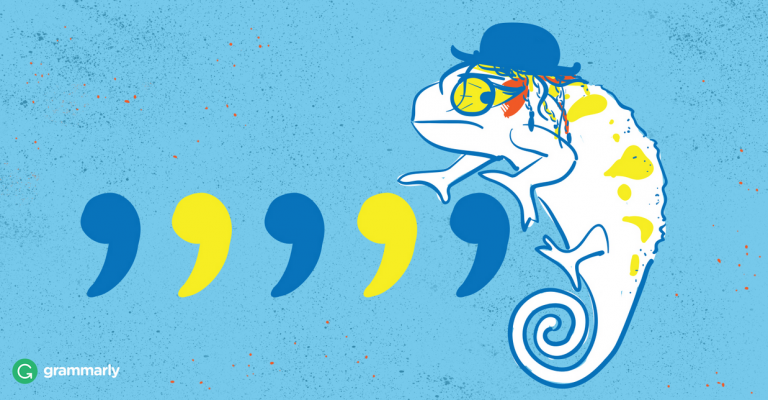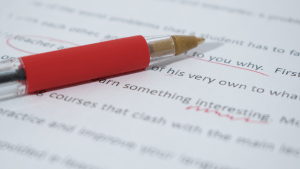The rules of punctuation can be befuddling for the best of us at times. A good content writer has to be very mindful about their punctuation, as this may affect the quality of their text and potentially cost them good clients. This article focuses on that little punctuation mark that is commonly a sore point for many writers: the comma.
What does a comma look like?
The seemingly innocuous comma is, surprisingly, one of the top mistakes made by writers. The comma of most fonts is similar in shape to the apostrophe and the single closing quotation mark, but is commonly identified by its position at the baseline of a text. It has a curved shape like a little filled-in number 9.
In most cases, commas are used to indicate a pause. This pause is shorter than a period (.), colon (:) or semicolon (;). Commas can be used to separate elements in a sentence, in dates and times, and can also be useful when writing numbers.
When should I use a comma?
If you dig (in my case, quite deeply) into your memory, you should be able to remember your primary school teacher naming a few uses of the comma. For the purposes of this article, however, I have put together a list of 13 rules to follow when using commas in your writing.
1) To separate words
Commas are often used to separate a series of words. This helps create a useful pause for the reader when making lists.
- I bought apples, pears, oranges, and kiwis from the fruit vendor.
- Would you like vanilla, strawberry, or chocolate ice-cream?
2) To separate phrases
Lists often consist of phrases rather than words. In this case, we can also use commas to separate one phrase from another and inject meaning into our sentences.
- I spend my free time watching old movies, listening to rock music, and writing short stories.
- Jane got some very expensive stuff from that antique shop: an old vase, a china tea set, and a really beautiful wall clock.
3) Between two independent clauses
According to Grammar Monster, an independent clause is one that “can stand alone as a complete sentence”. In other words, it contains both a subject and a verb, and is coherent. During speaking (and writing), we sometimes feel the need to connect two such independent clauses together. In that case, we need to use a comma.
- Tomorrow is a public holiday. The shops won’t be open.
- Tomorrow is a public holiday, so the shops won’t be open.
- I don’t like tomatoes. I do like tomato ketchup.
- I don’t like tomatoes, but I do like tomato ketchup.
4) After introductory phrases

- At first, the new student was very shy.
- However, more was yet to come.
- In autumn, all the trees in our garden lose their leaves.
5) To indicate parentheses
Sometimes, additional information can be added to a sentence without changing the meaning of that sentence. The ‘extra’ information is put between commas, and is referred to as a parenthetical element. The word ‘parentheses’ also means brackets, which means that you may, if you like, substitute the commas with brackets instead.
- Krista’s new car, which she bought last May, has already broken down.
OR
- Krista’s new car (which she bought last May) has already broken down.
- Paula Hartley, who turned 28 last week, has broken the world record for the longest long jump.
OR
- Paula Hartley (who turned 28 last week) has broken the world record for the longest long jump.
Removing the phrase between commas (or brackets) doesn’t make any difference whatsoever. All it does is provide some additional information for the benefit of the user.
- Krista’s new car has already broken down.
- Paula Hartley has broken the world record for the longest long jump.
6) Between coordinate adjectives
The English language is very rich and hence we may often feel the need to describe a noun with coordinate adjectives. Coordinate adjectives are a series of consecutive adjectives whose order is not important, i.e. they can be switched around in the sentence and may also follow the conjunction and.
- He was big, fat and ugly.
- Dinner was tasty, filling and expensive.
7) Before/after direct speech
Commas are often used directly before the opening and closing quotation marks that indicate direct speech. Sometimes, these commas may be replaced by colons depending on the style guide a particular text has chosen to follow; however, commas are prevalently used in most printed material.
- The professor remarked, “You’re the class clown, aren’t you?”
- “I’m not feeling very well,” said Dan.
8) In contrasting statements
We use a comma to separate phrases that express contrast.
- Hannah likes most sports, but hates basketball intensely.
- What’s most important in life is good health, not money.
9) For clarity

- Let’s eat Grandma.
- Let’s eat, Grandma.
10) To facilitate sentence flow
Many a successful blog writer will tell you how important sentence flow is for readability. Adding a few strategic commas may help enhance readability and avoid confusing the reader. Check out how the following sentences have been improved by adding commas:
- She was of course very flattered by the job offer from such a prestigious company.
- She was, of course, very flattered by the job offer from such a prestigious company.
- There weren’t as many people as she had expected after all.
- There weren’t as many people as she had expected, after all.
11) Before question tags
According to the British Council, question tags are “the short questions that we put at the end of sentences, particularly in spoken English.” Question tags are always preceded by a short pause, which, in written English, is denoted by a comma. We use question tags when we expect the listener to agree to a particular statement.
- It’s a lovely day, isn’t it?
- Janet can be such a wet blanket, can’t she?
12) In dates, addresses and numbers
- The world-famous Parisian cathedral of Notre-Dame caught fire on April 15th, 2019.
- Sherlock Holmes resided at 221B, Baker Street, London.
- A 2017 population count named 490,297 as the number of people currently living in Malta, the most densely populated country in Europe.
When NOT to use a comma!
Now that you know when and how exactly to use a comma, it’s time to learn when not to!
One of the most common errors made by writers is known as a comma splice. A comma splice is the mistaken use of a comma to join two independent clauses in the absence of a conjunction, as follows:
- It’s raining cats and dogs, you should take an umbrella.
- Kate read the book, George watched the movie.
Comma splices can be easily fixed by adding a conjunction, replacing the comma with a semicolon (;) or splitting the clauses into independent sentences.
- It’s raining cats and dogs. You should take an umbrella.
OR
Since it’s raining cats and dogs, you should take an umbrella.
- Kate read the book; George watched the movie.
OR
Kate read the book. George watched the movie.
If you’re a hopeful writer looking to find some freelance work, have a look at more grammar mistakes to watch out for while writing!





